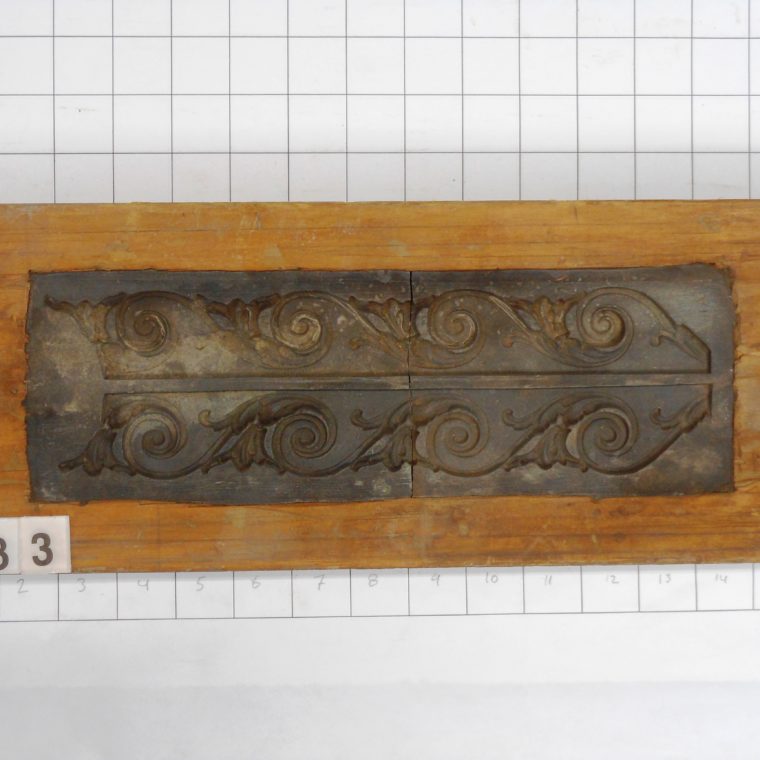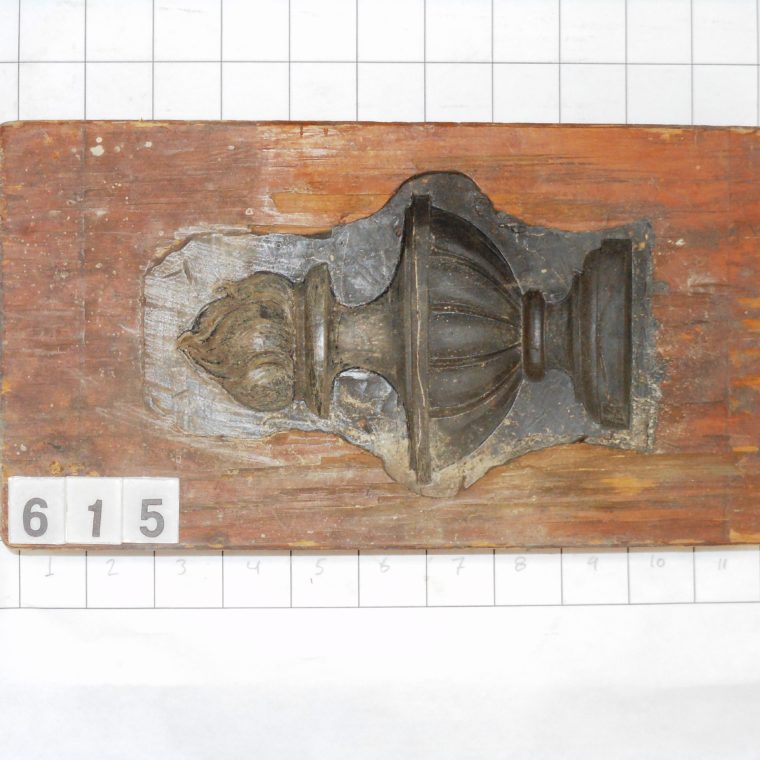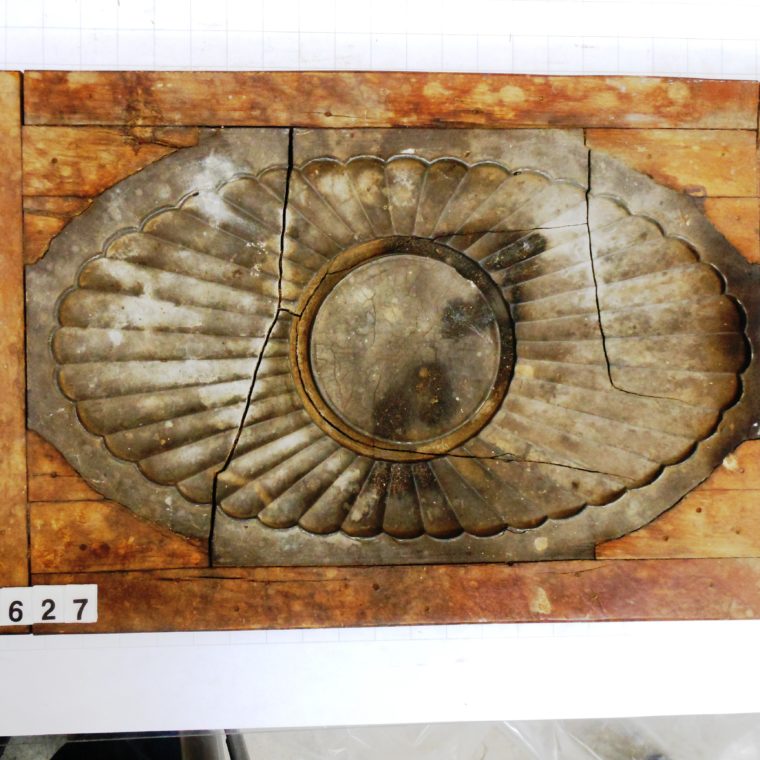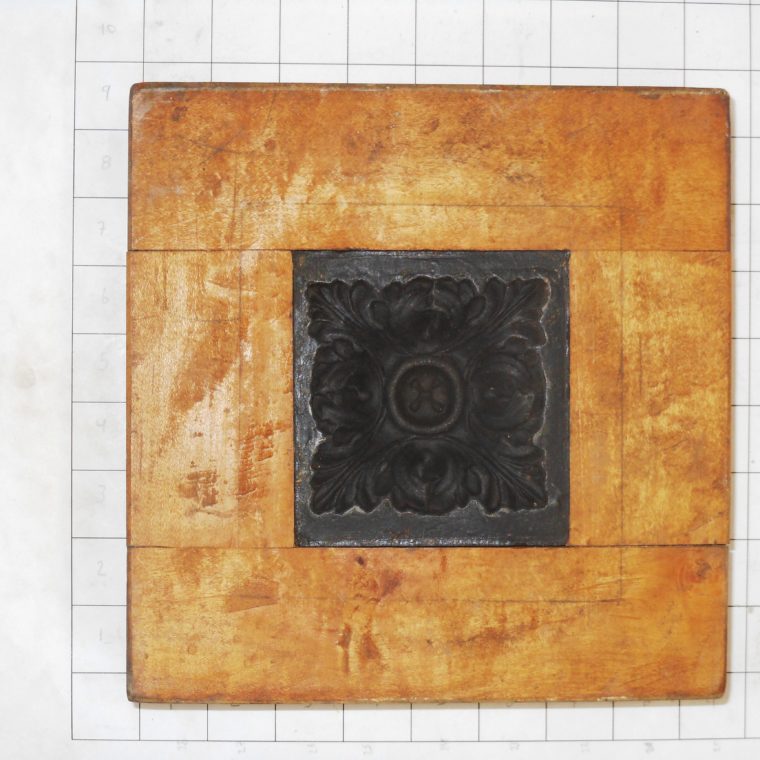Gifts of Monumental Construction and Moulding Company and Eli Nassim and Debra Picker
Donated in 2011 and 2013
Starting in the 1700s with the invention of composition plaster, builders used bitumen molds to create plaster ornament for buildings since the plaster’s ability to be formed off site made prefabrication of decorative elements possible, which was easier for workers. Throughout the 19th and 20th centuries, molds like these helped architects and designers decorate rooms with elaborate classical swags and urns; peacocks and flowers; cornucopia and fawns, in homes and public buildings around the world. Today, plaster casting is done with plastics and other modern, precision materials, making these molds and wooden trays part of the history of architectural ornament.
The Museum’s decorative plaster collections include both double-sided decorative wooden panels of various heights and widths to which examples of hundreds of historically significant ornamental architectural elements are affixed and over 1,500 bitumen molds used to create the designs. Stylistic periods from Art Deco to the Baroque to Rococo are represented, and many types of decorative components can be found from Greek anthemion to Vitruvian wave scrolls.
The Decorative Plaster collection is in storage and not on view. Please check current exhibitions for a list of what is publicly accessible.





